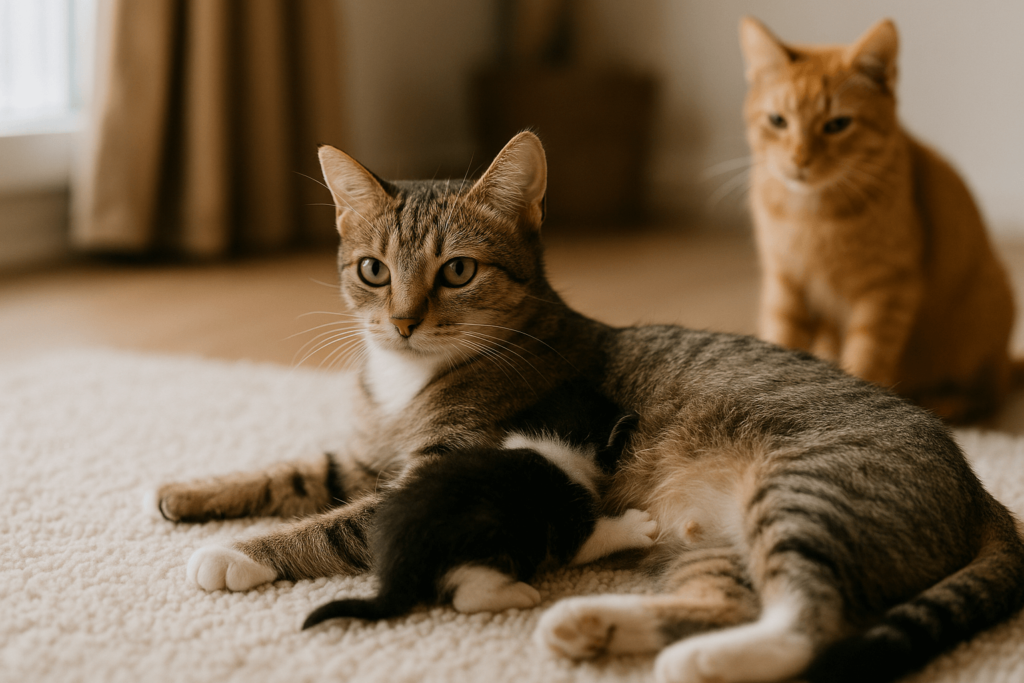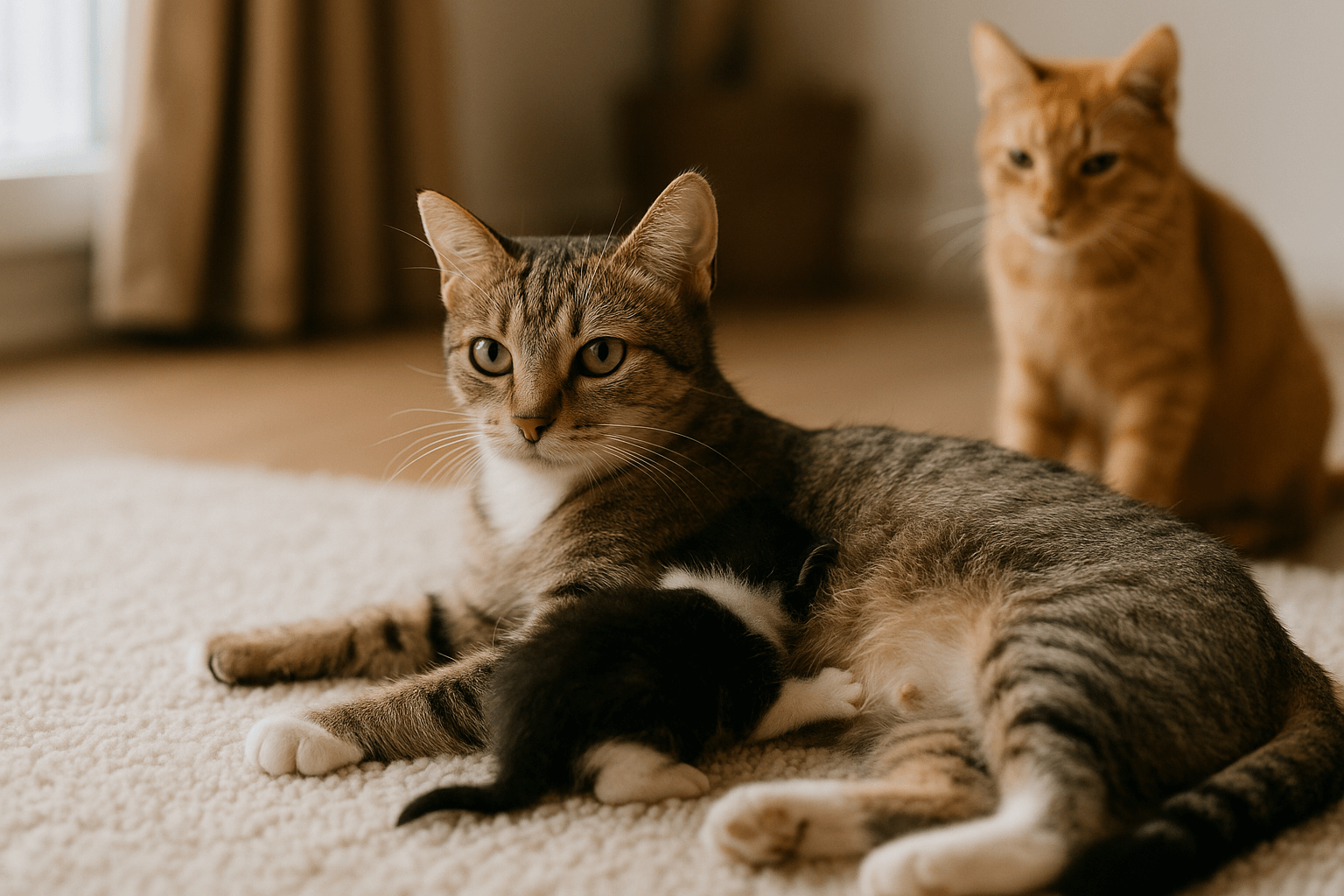How Soon Can a Cat Get Pregnant Again?
Cats are remarkable creatures, but their ability to reproduce quickly can sometimes catch owners off guard. If you’re wondering how soon a cat can become pregnant after giving birth, you’re not alone. Understanding your feline’s reproductive cycle is essential for responsible pet ownership and preventing unintended litters. Female cats, also known as queens, can enter heat shortly after delivering kittens, making it crucial to monitor their health and take preventive measures. In this blog post, we’ll explore the timeline of feline fertility, provide expert advice on managing reproduction, and discuss why spaying is often the best choice for both your cat and the community.
The Timeline of Feline Reproduction
Cats have an impressive reproductive capacity, which means they can become pregnant again sooner than many people realize. Here’s a breakdown of the key stages in their reproductive cycle.
Return to Heat After Birth:
A female cat can go back into heat as early as one to two weeks after giving birth. This rapid return to fertility ensures their ability to produce multiple litters in a year.Kitten Weaning Period:
While kittens typically nurse for about six to eight weeks, the mother’s body doesn’t wait for weaning to restart her reproductive cycle.Frequency of Heat Cycles:
Cats are seasonally polyestrous, meaning they can experience multiple heat cycles during breeding seasons (usually spring through fall).No Breeding “Break”:
Unlike some animals, cats don’t have a natural pause between pregnancies unless they are spayed or unable to mate.Potential for Back-to-Back Litters:
Without intervention, a cat could theoretically give birth to up to three litters per year, leading to overpopulation concerns.
This rapid reproductive timeline underscores the importance of proactive measures to manage your cat’s fertility responsibly.

Signs Your Cat Is Ready to Mate Again
Recognizing the signs that your cat is entering heat again can help you make informed decisions about her care and prevent unwanted pregnancies.
Increased Vocalization:
Cats in heat often yowl loudly to attract male cats. This behavior can be persistent and disruptive.Restlessness and Pacing:
Your cat may seem unusually restless, pacing around the house or trying to escape outdoors.Excessive Affection:
During heat, cats may rub against objects, furniture, or people more frequently than usual.Positioning for Mating:
A cat in heat will often assume a crouched position with her rear end raised when approached, signaling readiness to mate.Frequent Spraying:
Unspayed female cats may spray urine around the home to mark territory and signal availability to males.
Understanding these behaviors allows you to anticipate and address your cat’s needs while taking steps to prevent future pregnancies.
Check this guide 👉Understanding Cat Pregnancy Tests: Best 7 Expert Tips!
Check this guide 👉Wet Food for Pregnant Cats: Best 7 Expert Tips!
Check this guide 👉Pregnant Cat vs Worms: Best 7 Expert Tips!
Factors Influencing Pregnancy Timing | Ways to Manage Reproduction |
|---|---|
Age and maturity of the cat | Spaying to prevent pregnancy |
Seasonal breeding patterns | Keeping cats indoors during heat |
Health and nutritional status | Monitoring for signs of heat cycles |
Presence of intact male cats nearby | Separating males and females |
Genetic predisposition | Consulting a vet for reproductive care |
Why Spaying Is the Best Option
Spaying your cat is one of the most effective ways to prevent unwanted pregnancies and ensure her long-term health. Here’s why this procedure is highly recommended by veterinarians.
Eliminates Risk of Pregnancy:
Spaying removes the ovaries and uterus, permanently preventing your cat from becoming pregnant.Reduces Overpopulation:
Millions of stray cats face euthanasia each year due to overcrowding in shelters. Spaying helps combat this issue.Improves Longevity:
Spayed cats tend to live longer, healthier lives, as the procedure reduces the risk of certain cancers and infections.Minimizes Behavioral Issues:
Spaying eliminates heat cycles, reducing behaviors like excessive vocalization, restlessness, and spraying.Cost-Effective Solution:
The cost of spaying is far lower than raising multiple litters of kittens, which requires food, vaccinations, and medical care.
Choosing to spay your cat benefits not only her well-being but also the broader community by promoting responsible pet ownership.
Tips for Managing an Unspayed Cat
If spaying isn’t immediately possible, there are temporary steps you can take to manage your unspayed cat’s reproductive behavior.
Keep Her Indoors:
Prevent access to male cats by keeping your cat indoors during her heat cycles.Supervise Outdoor Time:
If she must go outside, supervise her closely and keep her on a leash or in a secure enclosure.Use Distractions:
Engage your cat with toys, puzzles, and interactive play to distract her from mating urges.Separate Cats During Heat:
If you have both male and female cats, separate them during heat cycles to avoid accidental breeding.Plan for Spaying ASAP:
Schedule a spaying appointment as soon as possible to avoid future complications or pregnancies.
These strategies can help you manage your cat’s fertility temporarily while preparing for a permanent solution.
Risks of Frequent Pregnancies
Frequent pregnancies can take a toll on a cat’s physical and emotional health. Understanding these risks highlights why managing reproduction is so important.
Nutritional Deficiencies:
Continuous pregnancies deplete essential nutrients, leaving the mother weak and malnourished.Increased Stress Levels:
Constantly being in heat or carrying litters places immense stress on a cat’s body and mind.Higher Risk of Complications:
Frequent pregnancies increase the likelihood of birthing difficulties, infections, or miscarriages.Impact on Kittens’ Health:
Overbred mothers may produce weaker, underdeveloped kittens prone to health problems.Shortened Lifespan:
The cumulative strain of multiple pregnancies can shorten a cat’s lifespan significantly.
Preventing frequent pregnancies protects both the mother and her offspring from unnecessary suffering.
Benefits of Early Spaying
Spaying your cat early offers numerous advantages beyond preventing pregnancy. These benefits make it a wise investment in her overall health.
Reduced Cancer Risk:
Early spaying lowers the risk of mammary tumors and ovarian cancer, which are common in unspayed cats.Prevents Pyometra:
Pyometra, a life-threatening uterine infection, is entirely avoidable through spaying.Easier Recovery:
Younger cats recover faster from surgery compared to older ones, minimizing discomfort and downtime.Fewer Hormonal Fluctuations:
Early spaying stabilizes hormone levels, reducing mood swings and erratic behavior.Long-Term Savings:
Avoiding costly treatments for reproductive diseases saves money in the long run.
Early spaying provides lifelong benefits, ensuring your cat remains healthy and content.
Myths About Spaying Cats
Misconceptions about spaying persist, leading some owners to delay or avoid the procedure. Debunking these myths encourages informed decisions.
Myth: Spaying Will Make My Cat Fat:
Weight gain results from overfeeding, not the surgery itself. Proper diet and exercise prevent obesity.Myth: It’s Cruel to Spay a Cat:
Modern veterinary practices ensure spaying is safe, humane, and minimally invasive.Myth: One Litter Won’t Hurt:
Even one litter contributes to overpopulation and puts additional strain on shelter systems.Myth: Cats Should Experience Motherhood First:
There’s no evidence that motherhood improves a cat’s quality of life; it often does the opposite.Myth: Spaying Is Too Expensive:
Many low-cost clinics and programs exist to make spaying affordable for all pet owners.
Dispelling these myths empowers cat owners to prioritize their pets’ health and happiness without hesitation.
Frequently Asked Questions About Feline Pregnancy
How young can a cat get pregnant?
Cats can reach sexual maturity as early as four to six months old, making them capable of pregnancy at a young age.
Can a nursing cat get pregnant again?
Yes, a nursing cat can still ovulate and conceive even while caring for her current litter.
What happens if a cat gets pregnant too soon?
Frequent pregnancies can strain a cat’s body, leading to health issues for both her and her kittens.
Is it safe to spay a cat during heat?
While spaying during heat is possible, it may carry slightly higher risks. Consult your vet for guidance.
How do I know if my cat is pregnant?
While spaying during heat is possible, it may carry slightly higher risks. Consult your vet for guidance.
Taking Responsibility for Your Cat’s Reproductive Health
Understanding how soon a cat can get pregnant again emphasizes the importance of proactive care and responsible decision-making. Whether you choose to spay your cat or manage her fertility temporarily, prioritizing her well-being ensures a happier, healthier life for her—and fewer challenges for you. By staying informed and taking action, you contribute to reducing pet overpopulation and fostering a better future for all cats. Remember, every step you take toward responsible pet ownership makes a meaningful difference.
Cat Fever Treatment: Best 7 Expert Tips! Discover expert advice on identifying, managing, and treating fever in cats to ensure their quick recovery and well-being.
Understanding Meloxicam for Cats: Best 7 Expert Tips! Learn how to safely administer meloxicam, manage side effects, and ensure your cat's comfort with expert advice on feline pain relief.
Amoxicillin for Cat UTI: Best 7 Expert Tips! Discover safe usage, dosage guidelines, and expert advice on treating feline urinary tract infections effectively with amoxicillin.
Understanding Cat Cancer Treatment: Best 7 Expert Tips! Discover expert advice on managing feline cancer, from early detection to treatment options, ensuring your cat’s health and comfort.





